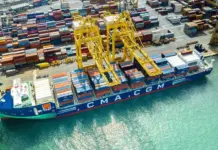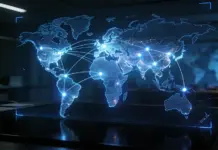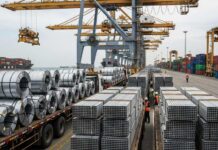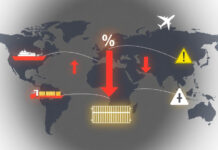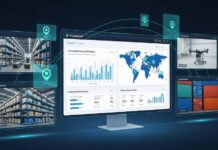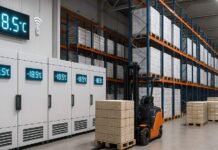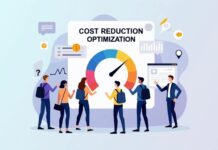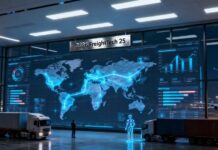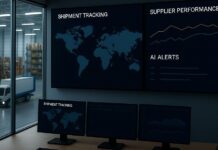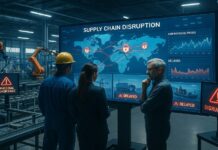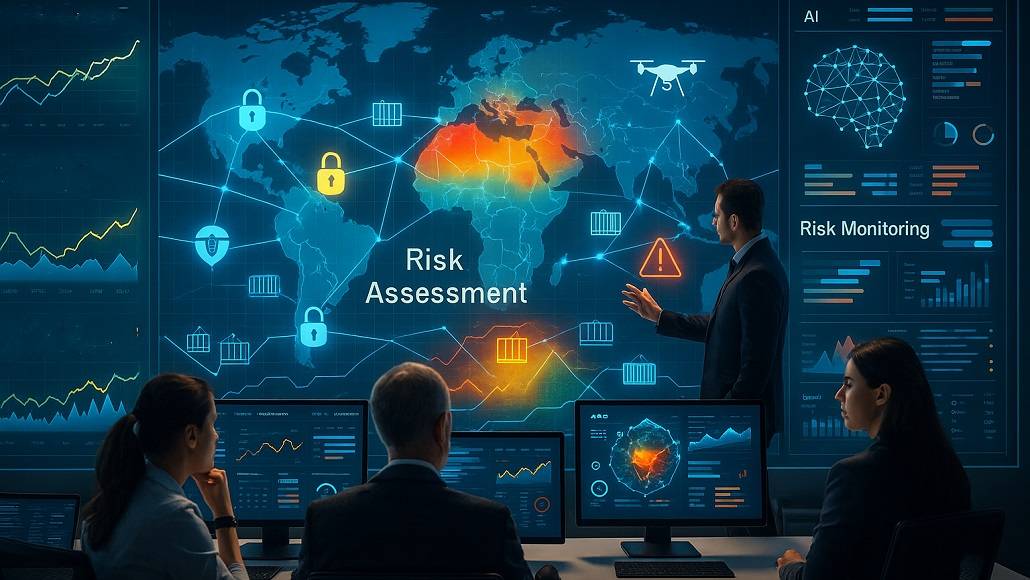In the increasingly interconnected and globalized world, supply networks serve as the backbone of economies and industries. The vulnerabilities in such networks, though, have been highlighted time and again by disruptions as varied as geopolitical conflicts to natural calamities and pandemic crises. Building resilience in supply networks is not an afterthought; it is a strategic resource. Mitigating risk in supply chains requires sophistication and foresight, proactive measures coupled with collaboration and inventive thought.
Understanding Supply Network Vulnerabilities
The first step of risk mitigation in supply networks is to identify the vulnerabilities that can cause deep disruptions. Supply networks are vulnerable to different risks, which can be generally classified into three dimensions:
- Operational Risks: These involve disruptions resulting from internal inefficiencies, like equipment malfunction, shortage of personnel, or inventory mismanagement.
- External Risks: External risks result from occurrences such as natural disasters, pandemics, geopolitical tensions, or changes in regulations. Such risks are usually not under the control of an individual organization.
- Strategic Risks: These result when businesses are unable to adjust to changes in the market, innovations, or changing customer needs.
Each risk category has its distinct features, but they tend to interact with each other, escalating their impact and making businesses face piling problems.
Fostering Collaboration Across the Network
Modern supply networks are rarely isolated; they are complex ecosystems involving a plurality of stakeholders such as suppliers, manufacturers, logistics companies, and retailers. Collaboration across the network is essential in risk management and building resilience.
Arguably, one of the most important lessons this pandemic has taught organizations is the degree to which transparency across partners greatly decreases likely exposures. When partners share real-time data on shipments, inventories and manufacturing schedules, partners can anticipate disturbances and prepare to precipitate change. Sophisticated softwares such as real-time data analytics platforms that provide a level of visibility across the entire supply chain are central to fulfilling this desire.
Integrating Advanced Technologies for Predictive Insights
The deployment of new technologies is a revolutionary change in how businesses go about managing risk prevention. Although some technologies such as artificial intelligence (AI), machine learning (ML), and blockchain may have only recently become established concepts, it has become clear the new supplies of tools now available are crucial to supply network management.
- Predictive Analytics and AI
Predictive analytics driven by Artificial Intelligence has become the bedrock of contemporary supply chain management. AI programs scan large quantities of past and present data to spot patterns, trends, and anomalies that may elude human operators. This data is then used to predict disturbances and recommend best-fit responses.
Another disruptive application of AI is in demand forecasting. AI can provide remarkably accurate forecasts of future demand levels based on consumption patterns, buyer preferences, and marketing analysis. This anticipates helps organizations to re-schedule production, minimize inventory, and avoid the risk of overstock or understock, which can otherwise result in major financial losses.
Apart from predictive analytics, AI can also improve supply chain decision-making with prescriptive analytics. In a disruption, for example, AI systems can suggest alternate routes, suppliers, or logistics arrangements to continue running with the least amount of disruption. This keeps companies agile and responsive even in the event of unforeseen problems.
- Blockchain for Transparency
Transparency is important to foster trust and accountability in supply chains, and Blockchain technology offers a secure and unalterable platform to accomplish this. In essence, Blockchain serves as a distributed ledger, logging any transaction or action in a manner that is tamper-evident and traceable. The utility of the technology has made it especially valuable for organizations in industries where the integrity and compliance of the supply chain is important.
From a risk management standpoint, Blockchain has the potential to provide real time tracking of goods and materials throughout the supply chain process. Pharmaceutical firms, for example, can utilize Blockchain to confirm the integrity of drugs to ensure that they have not been altered during transportation. Food manufacturers can also make use of Blockchain to track the source of their products so that consumers are assured of safety and quality.
Blockchain creates more opportunities for collaboration and data sharing among supply chain partners. Blockchain addresses the challenges of delivery, inconsistencies between partners, conflicts, and delays caused by asymmetrical data sharing because it provides one single version of the truth with transparent, real time data. For example, suppliers, logistics companies, and retailers can share a single Blockchain ledger allowing them to identify and confirm delivery schedules, inventory status, and payment status in real time.
Also, Blockchain facilitates greater compliance with regulatory requirements by creating a public record of all that has been done. Whether proving compliance with environmental statutes, labor laws, or free trade pacts, businesses can trust Blockchain to provide clear and reliable documentation.
- Automating Risk Assessment
Automation is completely changing how firms assess and respond to risks in their supply networks. In many organizations, risk assessment is a required activity. Using traditional risk assessment processes relies on manual reviews, which occur periodically, take up significant time, and can often be forgotten. Automated risk assessment systems can operate continuously and provides alerts whenever there are potential risks to the supply chain.
The foremost benefit of automation is its ability to aggregate and analyze enormous amounts of data rapidly and accurately. For example, Internet of Things (IoT) sensors mounted on shipping containers, throughout warehouses, or on assembly lines can transmit real-time readings of conditions such as temperature, humidity, and vibration. Automated systems are able to scan the readings to identify trends and anomalies that could indicate adverse conditions or events, such as equipment failures, perishables spoilage, or transportation disruptions.
Another significant advantage of automated risk assessment is scenario modeling. Advanced simulation programs can evaluate the ramifications of hypothetical situations, such as delays in getting supplies, ports going offline, or sudden spikes in demand. With simulations, organizations can identify points of weakness in their supply chains and develop targeted responses to mitigate risks.
In addition, automation consists of improved risk communications and ensuring that the right people get the right information at the right time.
Developing Contingency Plans and Diversification Strategies
Though sophisticated technologies exist to mitigate the impacts of risks, especially within diversifying and contingency plans, they are at the heart of successful, resilient supply networks.
- Contingency Planning: A Proactive Approach
Contingency planning is the process of assessing potential risks and creating actionable ways to mitigate these risks. The risk-mapping process starts with organizations looking at their supply chains in order to determine their potential vulnerabilities and threats. With a clearer understanding of where disruptions might occur, organizations can put resources and energy relying on where disruptions will occur.
The real effectiveness of contingency measures is the ability to adapt them and their flexibility. For instance, an organization can put in place substitute arrangements for sourcing with several different suppliers to ensure that there is continuity in the event of one supplier not being available. Logistics providers can similarly establish substitute transport routes to avoid interruptions like roadblocks or port strikes.
Crisis management is another imperative component of contingency planning. In the event of disruption, organizations should be capable of coordinating their response rapidly and efficiently. This implies well-established channels of communication, preassigned responsibilities and roles, and effective decision-making structures.
- Diversification Strategies: Spreading the Risk
Diversification is a long-term approach to minimizing dependence upon a single source of supply, production, or distribution. Through diversifying risk among several suppliers, geographies, or modes of transportation, organizations are able to improve the resilience of their supply chains.
For instance, an enterprise that buys raw materials from a single nation only can face severe consequences if that nation suffers from political unrest or natural calamities. By expanding its sourcing base to draw raw materials from different parts of the world, the enterprise can avoid the risk of disruptions.
Diversification also occurs in production and distribution capabilities. Multiple production units or distribution centers can be set up by organizations so that operations are not lost even if one of them is disrupted. In the same vein, using different modes of transportation—like air, sea, rail, and road—will give more flexibility and less reliance on any one mode.
Sustainability as a Pillar of Resilience
Resilience and sustainability of risk mitigation in supply networks are increasingly correlated. Customers and stakeholders nowadays expect companies to use environmentally friendly practices, and these practices can also lead to more resilient supply chains.
For instance, embracing circular economy practices—whereby products are repurposed, recycled, or reused—reduces waste and the reliance on raw materials. Sustainable sourcing will also help the long-term availability of resources while lessening the degradation of the environment itself.
When sustainability is included in supply chain planning as part of the process, organizations will develop not only resilience but establish a better link to eco-conscious consumers.
Conclusion: A Resilient Future
Risk mitigation in supply chain networks is complex, requiring a deep commitment to innovation, collaboration, and responsiveness. There is no system that is completely resilient and will not be interrupted, but companies that want to prevent and manage risk by taking advantage of technology, creating partnerships, and practicing sustainability will be the leaders in an uncertain world.
Ultimately, resilience is less about weathering disruptions, and more fundamentally about thriving in the aftermath. By pre-mapping for change; investing in strong systems; creating a resilient culture, organizations can assure that their supply chain is not only operational but also unbreakable.


